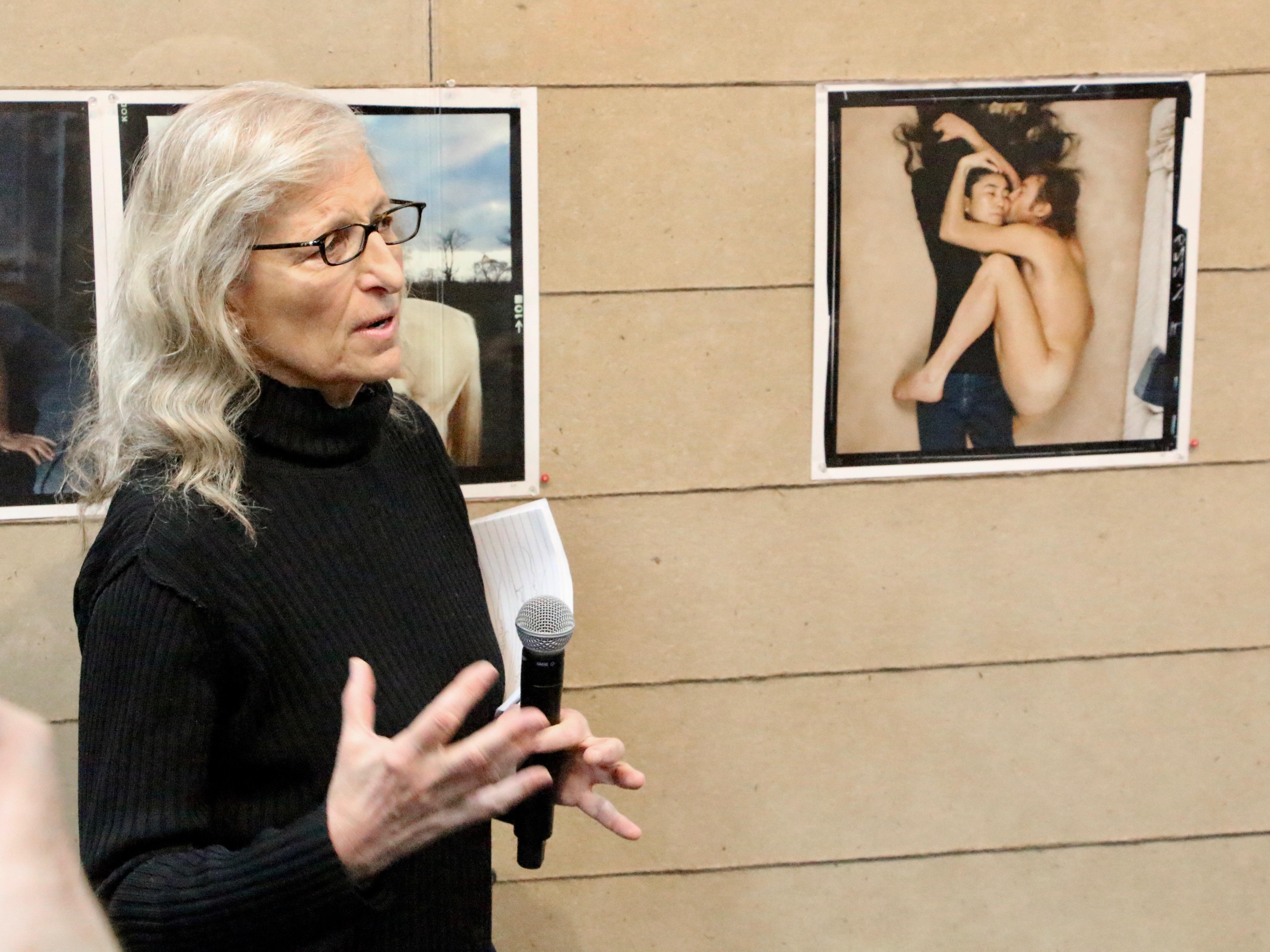“History takes over, it's bigger than you. You become very responsible to history,” Leibovitz tells Art & Object as she takes advantage of a calm that has settled over the gallery, hours before opening night. “By looking at it this way, by making it a stream-of-conscious river, I think I had to come to terms with I could not do the decisive moment. I couldn’t get that moment. It had to be a river. It was kind of like a storyline. I think the photographs needed each other. I don't know if that’s good or bad. It's hard to pick out an individual picture that could hold up without the ones around it.”
Studio portraits exemplifying Leibovitz’ body of work also defined the 1980s and 90s. They’re absent here, but will presumably follow in an Archive Project No. 2. Even so, impromptu snaps, like the one of Mick Jagger in an elevator on the 1975 Rolling Stones tour, hint at the photographer’s uncanny ability to comment on her subject while also commenting on the public’s perception of it.
“It’s not like this goes away. It’s packaged inside your head,” she says of the early work and how it informed the studio portraits that came later. “The reason I think this show talks so much about photography is it shows the evolution from doing this kind of staring at something and photographing what’s in front of you, and developing a point of view and thought process. And then you start to go into the portraiture, which really came out of doing the covers for Rolling Stone.”
































